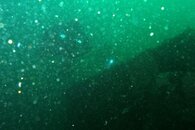FM1520
Contributor
If you go on a charter, won't they require an AOW anyway?
No, the Ruby E nor the Yukon require an advance cert.
Welcome to ScubaBoard, the world's largest scuba diving community. Registration is not required to read the forums, but we encourage you to join. Joining has its benefits and enables you to participate in the discussions.
Benefits of registering include
If you go on a charter, won't they require an AOW anyway?

Very little in dive training is 'absolutely necessary', notwithstanding our rants here on SB that might suggest otherwise. So, I will say AOW for your daughter is 'a good idea' before tackling either / both sites. In fact, I would say it is a very good idea, and you should listen to the voice coming from the 'conservative side'. In fairness to her, I have no idea how good a diver she is (or you are, for that matter), I don't know how deep she has been before, in what kind of conditions she has dove before, etc. So, it could be that she is a dive prodigy and is ready for even more challenging dives. But, for the purpose of this response, I will presume that is not the case (and pre-emptively apologize if it is.)The conservative part of me will likely put her in the AOW course before we go to the Ruby E, if nothing else she would have the official card saying she was properly "trained" to go on the dive if asked. But, there is still a small part of me that is wondering if it would be "absolutely" necessary or "just a good idea."
Exactly. So, why not develop, as part of the goal, a plan to make X number of dives over the next 6 months, with increasing depth / more challenging conditions, to get ready to dive both sites next summer? SLOW doesn't have to mean that you work up to it over two years. To me, it means gaining experience incrementally, so that each new dive presents an additional level of difficulty - not unlike playing Tetris.The problem with experience is that you have to have a number of dives to have experience. . . . But, you have to start somewhere one dive at a time.
And, there are (unfortunately) more than a few examples of that approach (although the Deep Adventure Dive hasn't involved a timed task for the past several years - it is now color recognition, and timed task has been moved to a later Deep Diver specialty dive). But, it has also 'been stated here on SB numerous times' that you can have a very good training experience in AOW with the right instructor / course content.It has been stated here on SB numerous times that a PADI AOW deep diver course doesn't mean much in terms of training. You essentially are briefed that you may experience narcosis, play with a few locks in the parking lot then again at 100 ft, watch your SPG for a few minutes to get a sense of how much faster you use air at depth. That was pretty much my experience.
GOOD! That is actually an important part of what the Deep Adevnture Dive is all about. You gain experience, and confidence, through a structured dive to depth.The thing I took out of my course was that I was no longer afraid to dive to 100 ft.
Both of you take a rescue class before doing any of those types of dives.

